Presenters and Affiliations
Dr. Olaf J. Bakker:Department of Vascular Surgery, St. Antonius Hospital, Nieuwegein, Netherlands
Prof. Andrej Schmidt:Department of Angiology, University Hospital Leipzig, Germany
Abstract
Coral reef aorta is a rare but complex vascular pathology characterized by severe calcification, often leading to multiorgan ischemia. Traditional open surgery carries high risks (mortality ≈10%), while endovascular repair faces technical challenges due to calcification and multi-branch involvement. This multicenter study of 10 cases systematically validated the safety and efficacy of “parallel stenting of the aorta and its branches,” achieving 100% technical success and branch patency, offering a novel solution for complex cases.
Introduction
Coral reef aorta, marked by extensive calcified plaques resembling “coral reefs,” frequently involves the celiac trunk, superior mesenteric artery (SMA), and renal arteries, causing multiorgan ischemia. Open surgery is invasive and risky for fragile patients, while endovascular repair is limited by stent malapposition and branch occlusion. This study introduces an innovative “parallel stenting technique” combined with dedicated covered stents, addressing these challenges effectively.
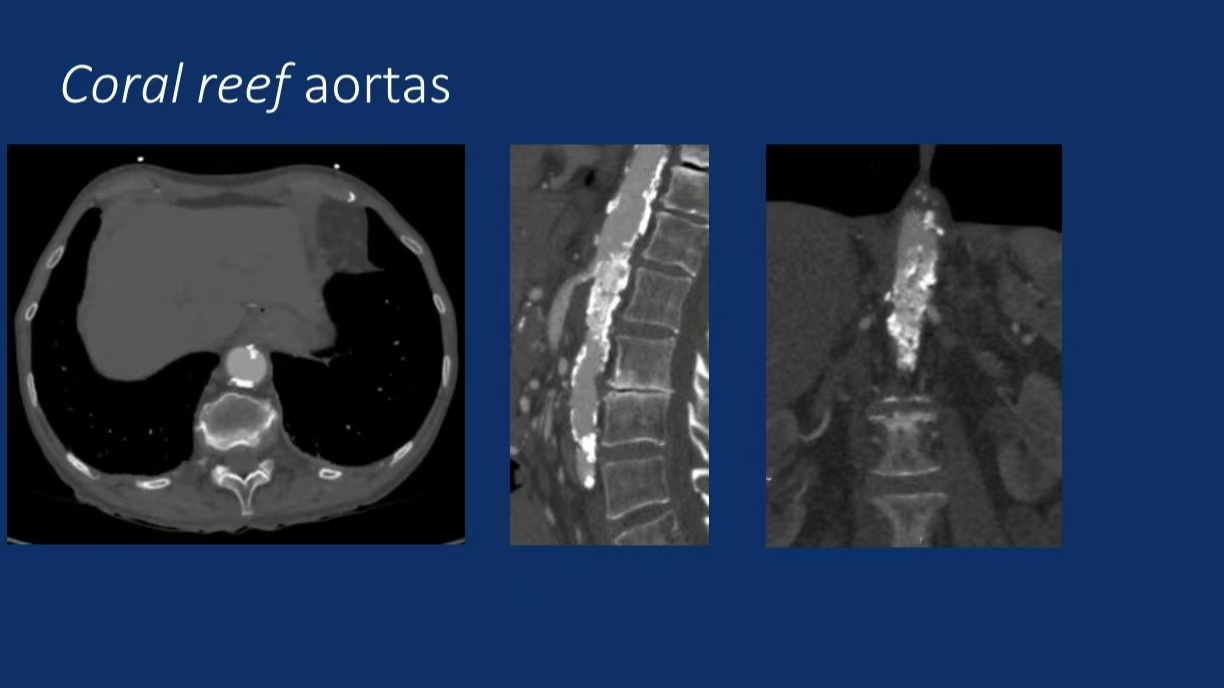
Case Analysis
Patient Profile
Age/Gender: 71-year-old female
Symptoms: Recurrent pulmonary edema (2 episodes), progressive renal insufficiency (GFR 21), chronic mesenteric ischemia, intermittent claudication
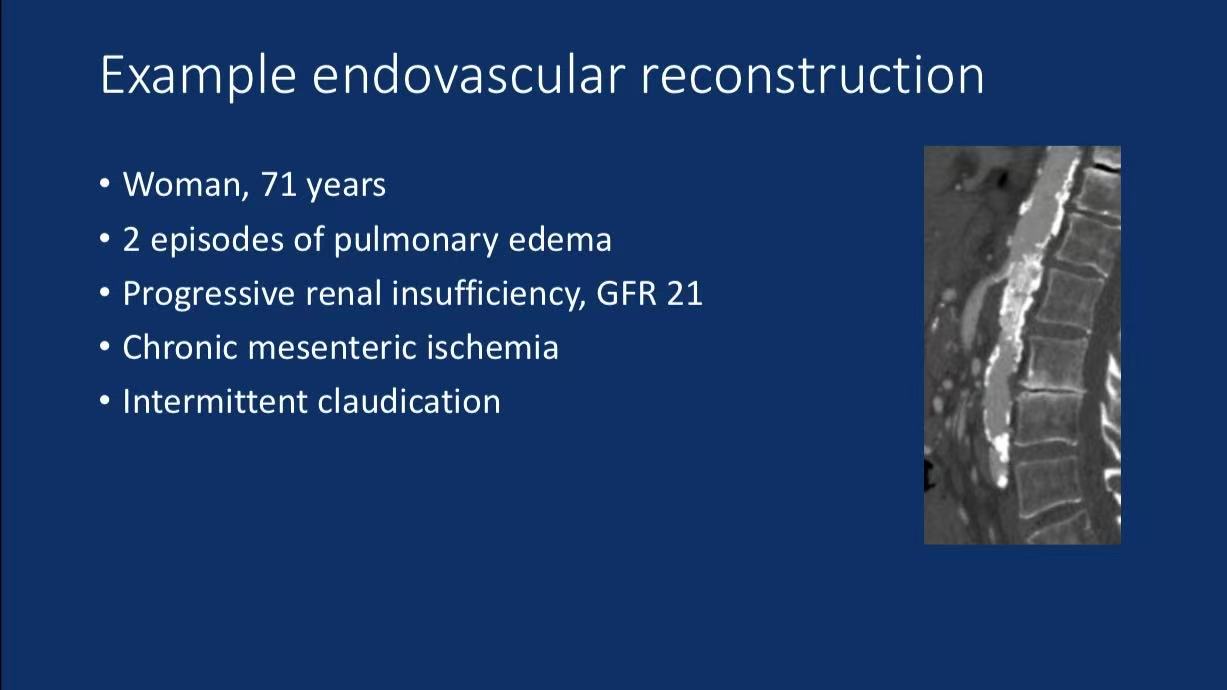
Imaging: Diffuse aortic calcification involving bilateral renal arteries and SMA (LSA occlusion)
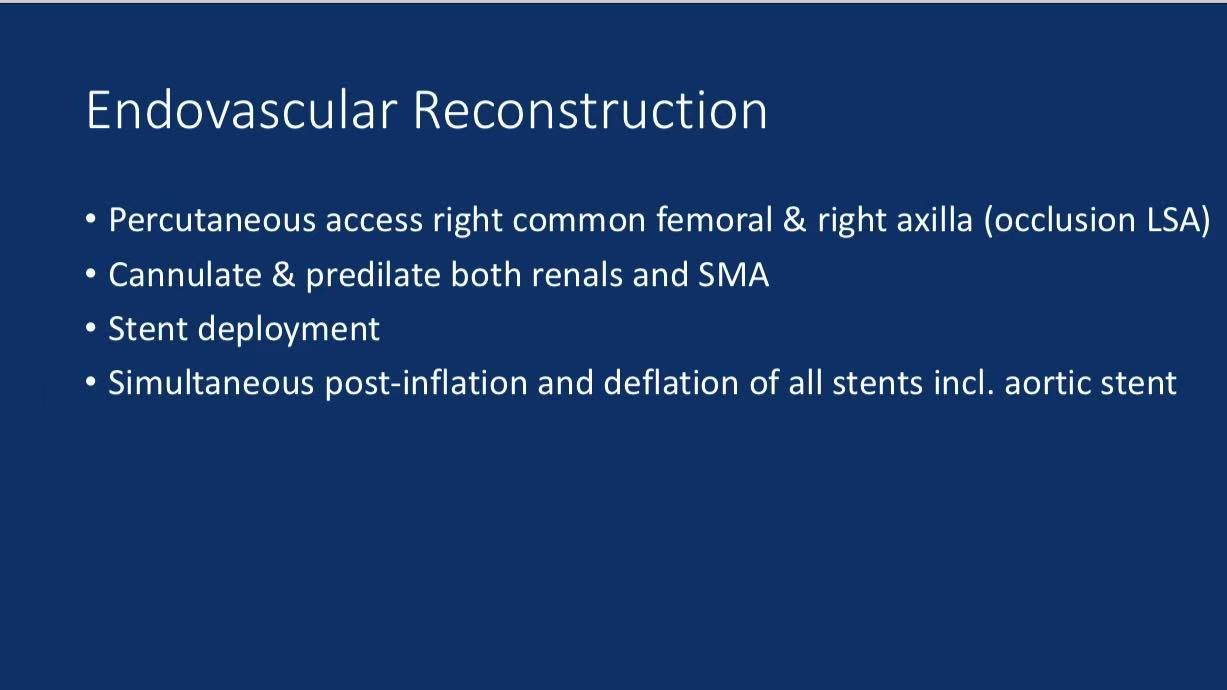
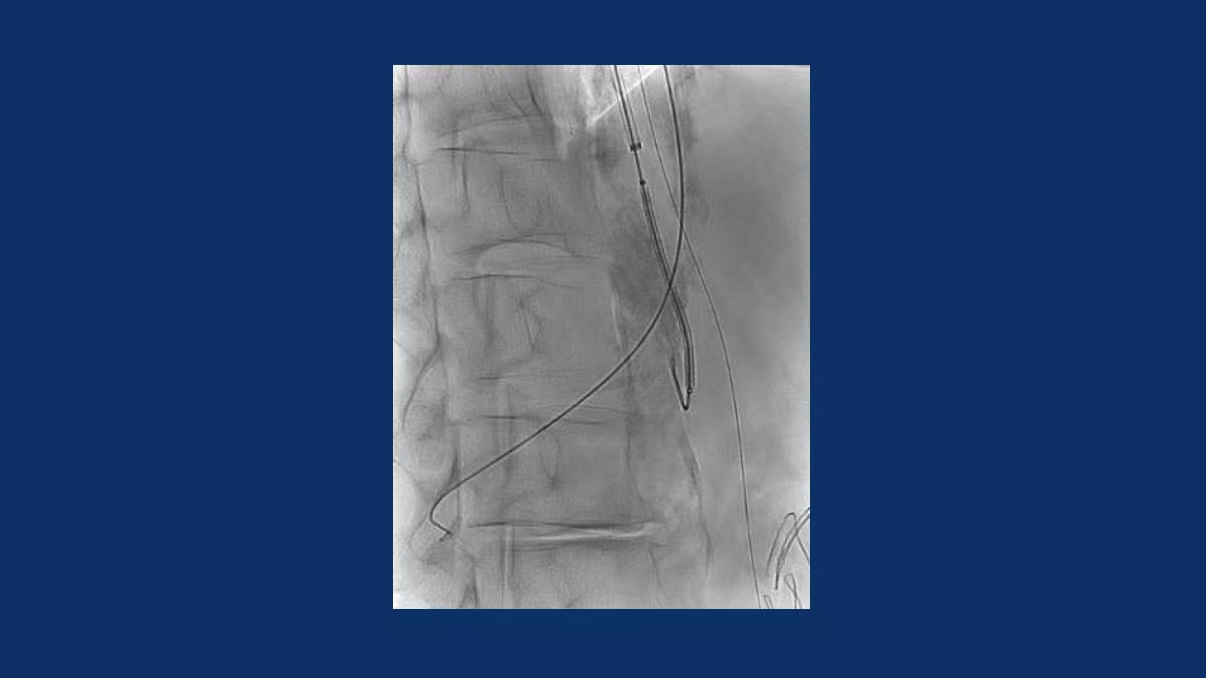
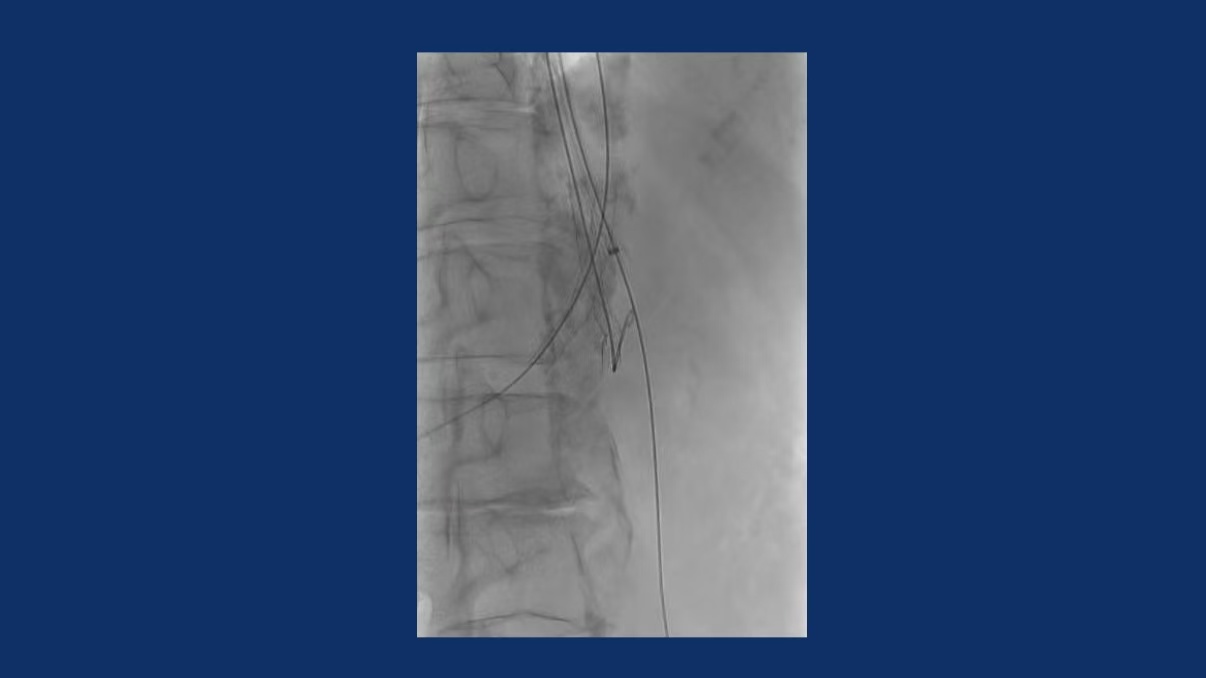
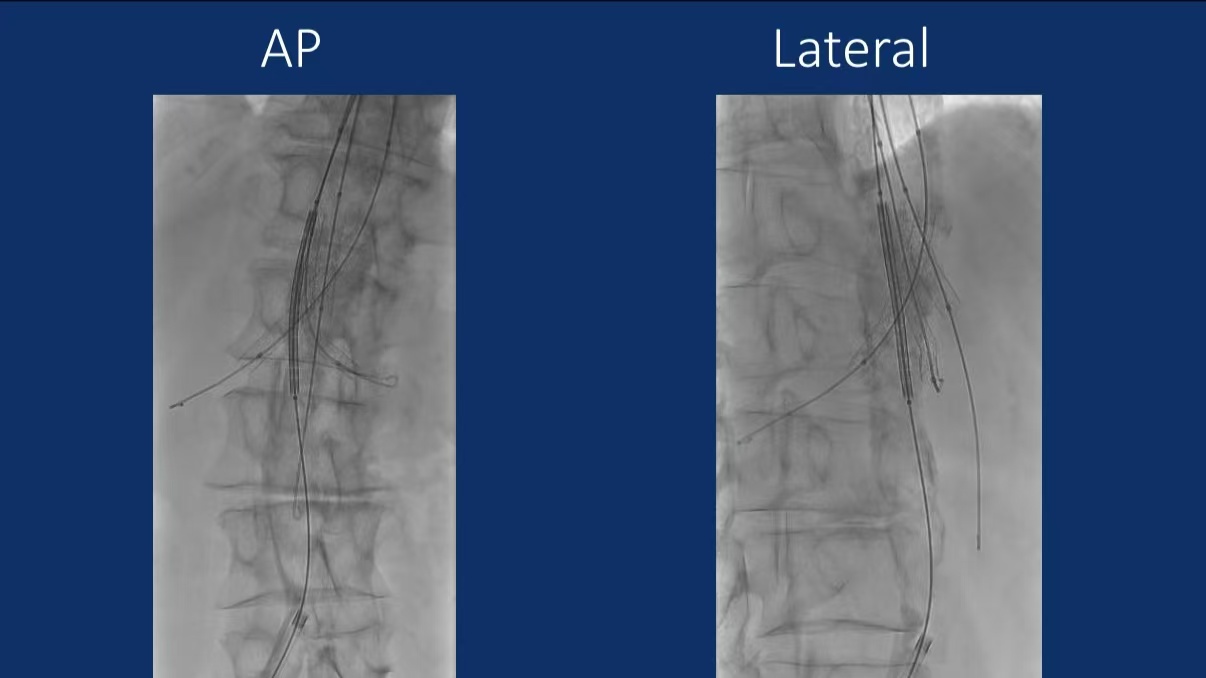
Procedure
Access: Percutaneous right common femoral and axillary access (left subclavian artery occlusion).
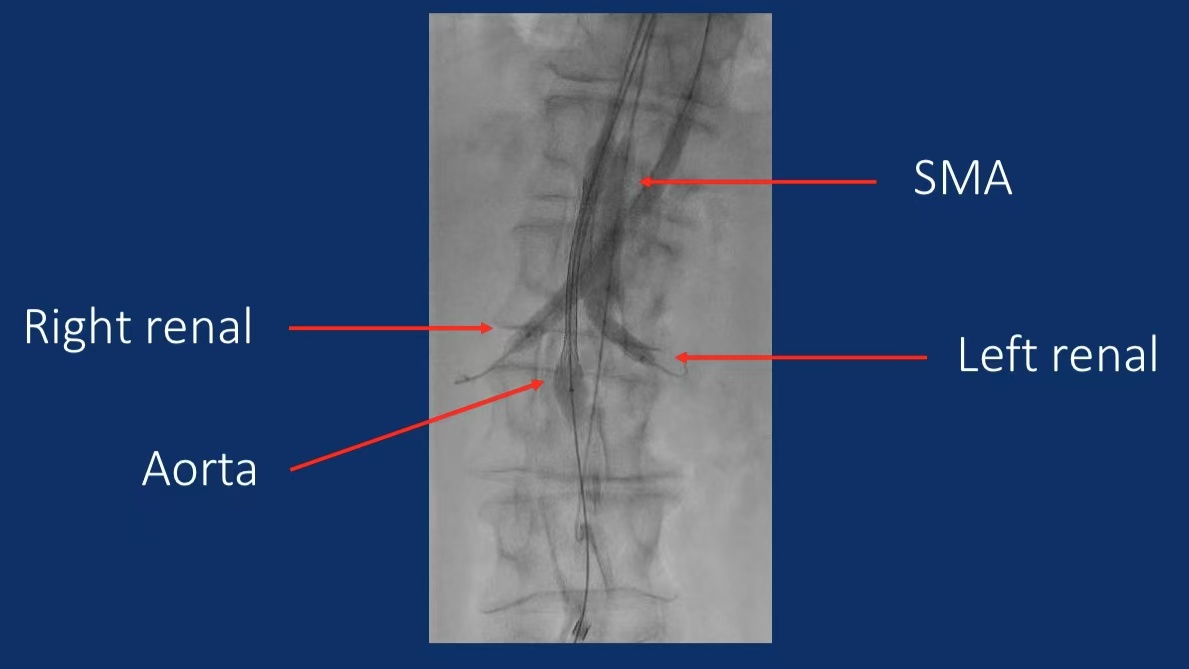
Branch Preparation: Balloon predilation of bilateral renal arteries and SMA.
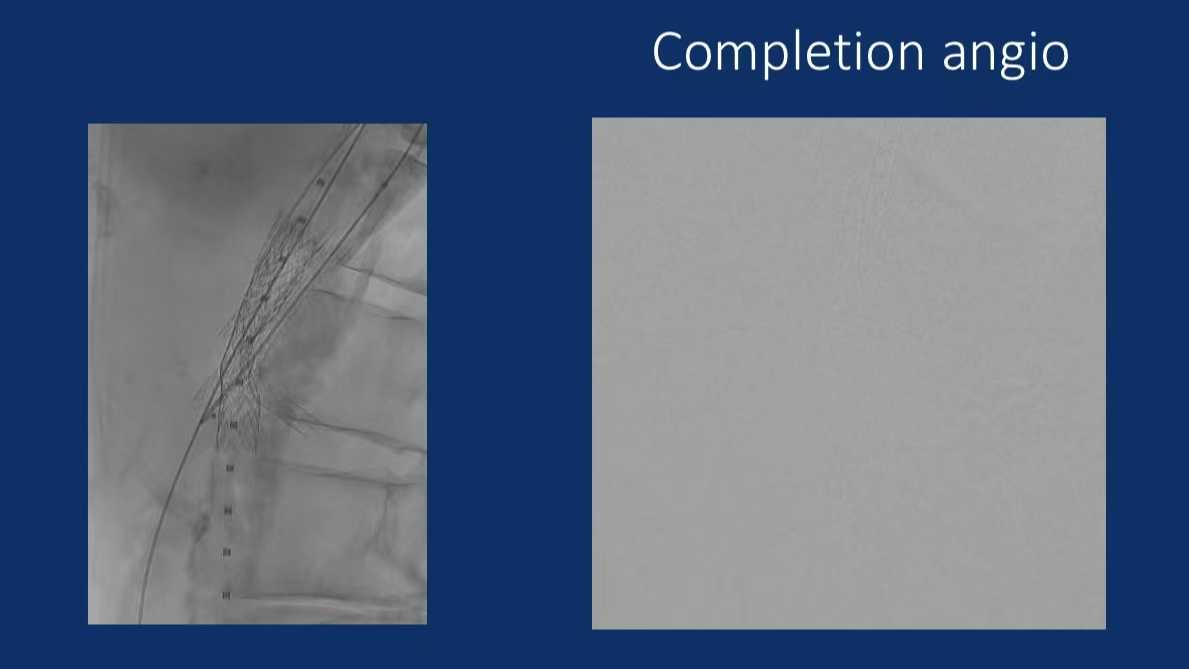
Stent Deployment:
Aortic Main Body: Bentley Begraft Plus covered stent (Bentley GmbH).
Branch Vessels: Bentley Begraft Aortic covered stent (Bentley GmbH).
Synchronized Post-Dilation: Simultaneous post-inflation of all stents to ensure optimal apposition.
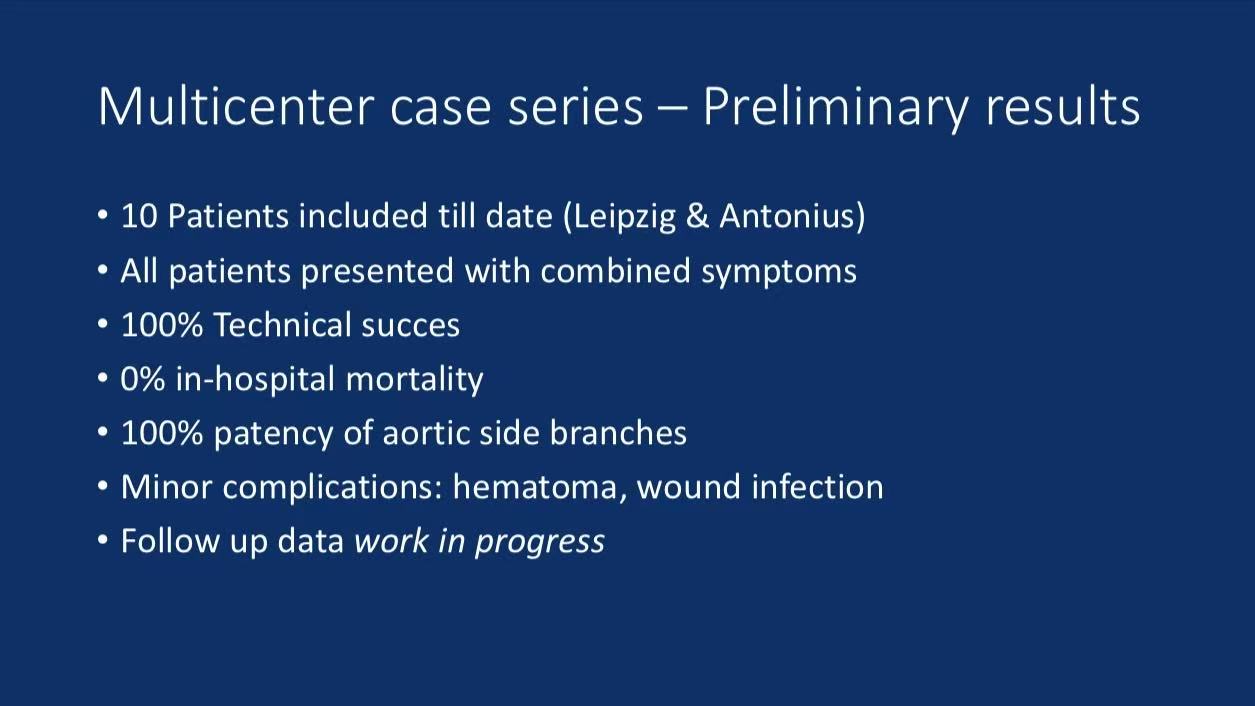
Outcomes
Technical Success: All branches patent without residual stenosis.
Clinical Improvement: GFR increased from 21 to 65, normalized blood pressure, resolved abdominal pain, restored walking capacity.
Complications: Minor hematoma, no major adverse events.
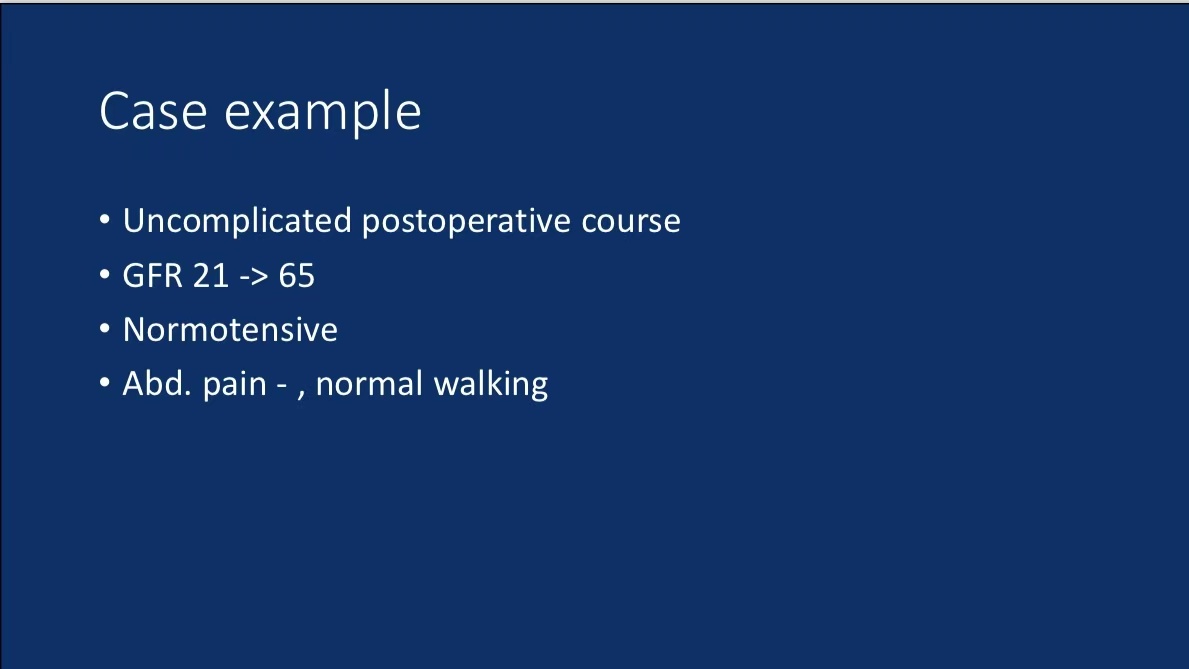
Product Highlights
The Bentley Begraft Covered Stent System (Bentley GmbH) demonstrated the following advantages:
Flexibility and Conformability: Enhanced trackability in calcified and tortuous anatomy.
Branch Protection: Unique covered design minimizes plaque shift, preserving distal perfusion (aligned with DOC’s emphasis on “maintaining distal blood flow”).
Size Versatility: Multiple stent sizes accommodate complex anatomies (DOC highlights “critical need for diverse sizing”).
Minimally Invasive Efficiency: Percutaneous approach reduces procedural trauma (DOC notes “minimally invasive and safe”).
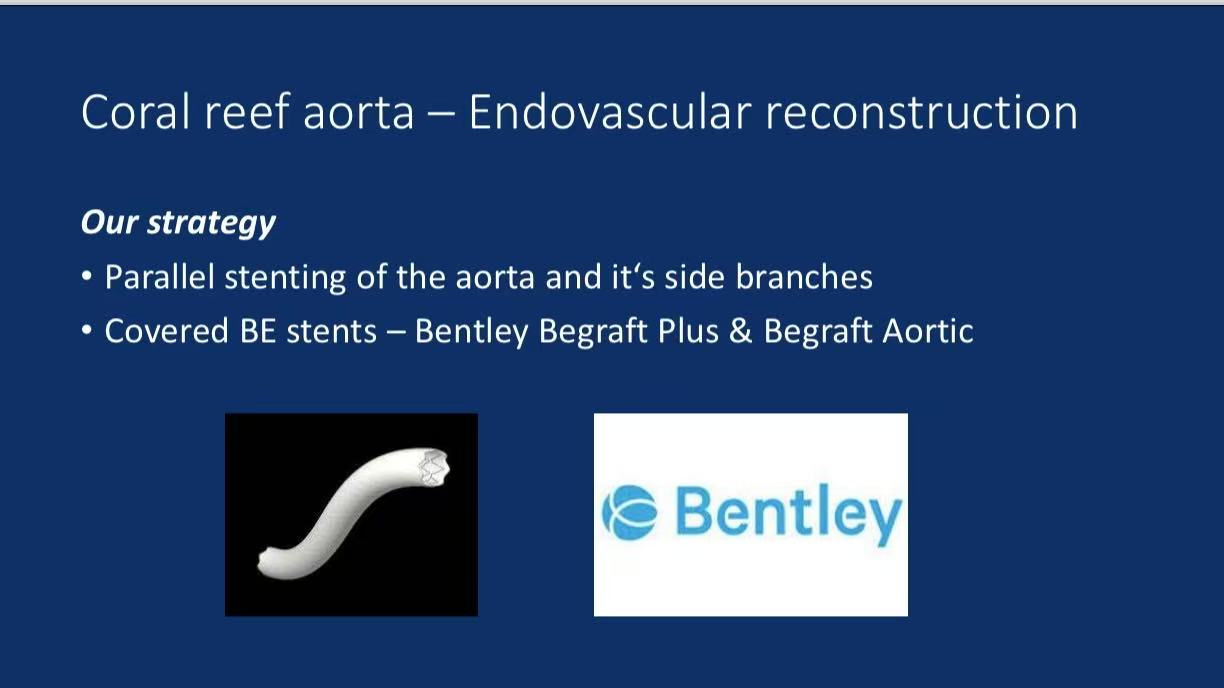
Conclusion
This study confirms that parallel stenting of the aorta and branches is a safe and effective strategy for coral reef aorta. The superior performance of Bentley Begraft stents provides critical technical support for complex cases. While larger cohorts and long-term follow-up are needed, these preliminary results offer vital guidance for vascular surgeons.



